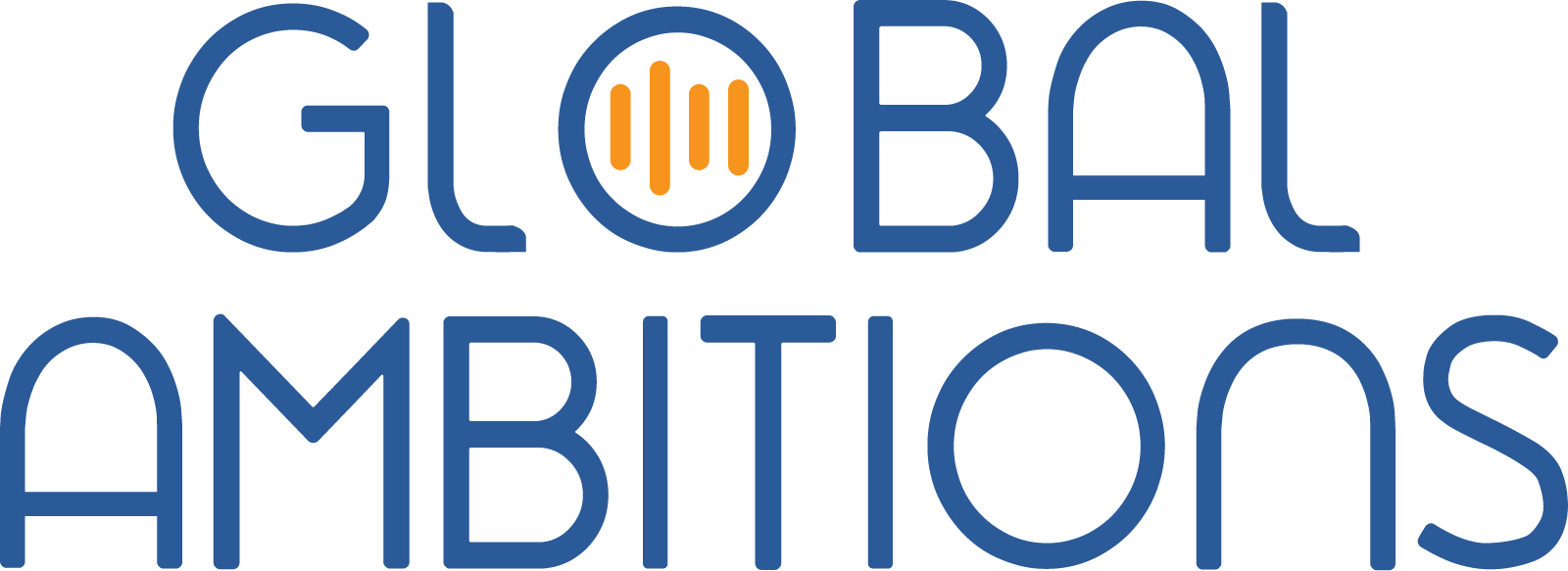With Jenny Kang, Director of Globalization at Veritas
Below is a full transcription of this episode
Antoine Rey
Hi, I’m Antoine Rey and I will be your host today for this Global Ambition podcast episode. My guest today is Jenny Kang, Director of Globalization at Veritas. The topic today is transforming internationalization in an enterprise software company. Jenny, welcome to the program.
Jenny Kang
Thanks for having me.
Antoine Rey
Can you give us very quickly a bit of background on you and your career at Veritas and in localization in general?
Jenny Kang
Sure. I’ve been in this industry for about roughly 20 years and been in this company, Veritas, for about five years. And Veritas used to be part of Symantec. So altogether, Symantec and Veritas about 16 years in this company. So I manage a team of globalization that consists of internationalization and localization services. We’re a centralized organization with a slightly different funding model. But we service more than product organizations that we work with, legal, marketing, all the teams inside the company.
Antoine Rey
OK, a very central function in this case. And tell me, because today our topic is around internationalization. And when someone joins an organization like Veritas or in general as a localization manager, they don’t think that they have to work with engineers as much as they actually have to do. So can you tell us maybe how did that work out for you and who owns internationalization?
Jenny Kang
Yes, at this point, international edition ownership is with product development teams. So they own the quality and as well as testing of internationalized software. Now, when I used to manage a team back in Symantec times, when we used to be Symantec, we had a pretty large organization that had international edition developers and testers doing all that work for the product teams. We had somewhere around six or seven developers going in and fixing a bunch of bugs in the products that we acquired. Because back in Symantec we used to acquire almost four companies per year. So we had a lot of companies that we bought that were immature. They had to get into the international market right away. So we were doing a lot of hands-on jobs there and we got out and then move on to other products to retrofit those.
Now, the downside with that was the fact that the, you know, old habits don’t die. So as soon as we get out of it, the product teams go right back to their old habits of hard coding strings and all those issues continue to come up. So that was one of the more fundamental problems.
And what we ended up doing toward the end of Symantec time where we were about to separate into two companies that we ran this major initiative to have the ownership of internationalization, moving back to product teams. Meaning they would do all the best practices to code and design the product in a way that supports the global market. But also to test them and everything would be ready before the end. And the localization team would continue to support with our coaches and internationalization services to help them with the training and any support that they need.
Antoine Rey
And I presume that was to help as well, influencing the engineering team to enable internationalization closer directly to the product. But what are the key factors that you needed to mandate and influence those teams?
Jenny Kang
Yeah, so I think there are several different factors in play. And I would say three are critical elements are technology and process and people.
So when I say technology, we can’t just expect product teams to carve out their time every day to retrofit and test the products that we need to have a mechanism to let them know where they are in terms of internationalization readiness. For that, we have this assessment tool that we work with every new product team to have them self-assess. It’s sort of a questionnaire, a survey tool to go through all the elements of where they are in terms of internationalization, readiness.
And so we come up with scores for each one of the products where they are and where they’re weak and have more gaps to close in terms of the readiness. So that part of it is one of the critical elements in the concept phase, in the beginning phase of the product development cycle. And we also have an in-house build code scanning tool called GoldenEye that scans through the code and looking for hardcoded strings, any critical options, and anything that will come up as issues from the product development standpoint so they can actually integrate this into their process to run that across their code, to look for issues and fix problems in the early in the phase.
And another thing that we do also is test automation, in which we have a set of libraries and tools that they can integrate into their test framework to test for internationalization issues before they hand up to the localization team. So there are a couple of different tools and technology aspect that are critical.
And the second factor I mentioned was a process. When I say process, it also includes standards because it’s very important to set standards for the company. Where you need to be if you’re building a new code, new features in new products. Or if we’re acquiring any companies, what is it that Veritas requires in terms of the compliance level for the internationalization?
So we have four different levels of internationalization. We require all the product teams to be at a certain level that includes local visibility enablement. So that’s one part of the process that we require the product teams to comply with. And then we also have this champion sponsor system where we work with a senior executive in a given product. Organizations have them be the sponsor for the internationalization globalization, and then they can nominate or have someone in their team volunteer, to be a champion. To be sort of the point person for our coaches to work with in terms of the training and where they need any support, any questions they have as they are going through the design and code coding and testing phase of their product development cycle. So that’s the process that’s been working pretty well to start from the top. But also we need to go to the bottom of the organization to make sure the work gets done. So the champion sponsor program has been working quite well.
And the people aspect, the third aspect that I mentioned, obviously, with all the technologies and standards and processes in place, we still need people buy-in. So senior sponsors, executives who need to have this sort of in a way, mandate. Right. Making sure that their engineering teams are following best practices. So we need the sponsorship at the highest level as possible. And we also have the company-wide newsletters that go out. The global edition newsletters that go out, publishes the scores and the risk levels of each product to sort of let them know where they are and what they need to work on in terms of closing the gaps to get into the global market. And we also need to train, you know, the new hires and all these new product teams to make sure that they follow their best practices. That’s also the people aspect of it.
Antoine Rey
Right. So that’s why I was going to ask next because you seem to have all aspects covered from technology processes and people. What kind of best practices do you evangelize and coach? And it seems like you have some sort of an awareness and education program for new engineers or existing engineers.
Jenny Kang
Yeah, so we do. So utilizing this a champion senior sponsorship program that we work very closely with the teams to understand their needs and put together customized training, side-by-side training, whichever way that they need to get to a certain level. So there’s one aspect of knowledge not knowing what to do to make it possible. And then there’s another thing about awareness. Oh, I didn’t know we had to think about it. Right. So I think different levels of training, it’s not just about how to follow best practices from an engineering standpoint, but also we need to educate and work with product managers who own the product and requirements to make sure that their equipment gets in.
And then, you know, the engineers are following the requirements that are put together by the product owners as well. So I think that there’s a different aspect of it. And that’s one of the reasons why we work also very closely with the product lifecycle, the program management teams, to make sure that all the major checkpoints, whether it’s a concept or delivery checkpoints, that internationalization, localization, that globalization requirements, and the stakeholders are signing off on that to make sure that they have followed up their requirements and deliverables.
But it’s not always working the way that we want. And this is one of those ongoing efforts that we continue to educate, train and evangelize and promote.
Antoine Rey
I bet it is. And do you provide some sort of a scoring mechanism for the different teams there?
Jenny Kang
Yes, we do. So the two things that we’re publishing is one is initialization levels. Levels mean where they are in terms of enablement. So level zero means you have a product that doesn’t function outside the US and level one, you can use English product outside the US, but it doesn’t have localizability support yet. And level two means it’s a fully localized level that supports all the character sets and everything. So you can actually sell the localized product anywhere in the world. And level three is in addition to that, there’s bidirectional localizability support. So we set level two as a standard level across the company. So this is where you have to get so that level gets published. And then the second thing that gets…
Antoine Rey
Will you publish them?
Jenny Kang
Yes, we publish them, and then another thing that we publish is also the scores that come out of this self-assessment tool that I mentioned, the global readiness scorecard. We work with product teams to generate the scores and those scores also get generated charts get published in the newsletter as well. And I think there’s a little bit of competition going on. And that also is triggering good support from the senior leadership team because they don’t want to have a lower score than others. Right.
Antoine Rey
And are best practices ever are not followed for whatever reason?
Jenny Kang
Oh, yes. Best practices and not followed every day everywhere for many different reasons. I think, you know, there have been some exceptions in terms of certain products, not following best practices from the get-go. There are a few cases where they try to come up with prototypes to test the market and they’re not sure if they’re going to productize any of that. So in that case, we sometimes give them exceptions.
But there are plenty of other cases where they have we call it excuses, but they have reason, various reasons in terms of why they have to defer this, because there are no customers immediately asking for this outside the US, and there are not immediate business opportunities. So a lot of that is driven in our company by product management in terms of what needs to be aware. The engineering resources need to be spent in any given iterations sprint. So I think that’s where a lot of challenges are, is that it’s not just the engineering best practices that we can push for, but also we have to go talk to business owners to make sure that we’re aligned.
So there are a lot of back and forth is sort of a broken record that we have to go and educate and evangelize and have that conversation all the time because they don’t understand the additional amount of effort that needs to be, you know, going in to be able to retrofit down the road. We had a product where, you know, the database was not enabled to handle, the asked for characters. And that had lost a lot of international revenue opportunities. It would have taken them only about three or four days to make that possible. Whereas it took them almost a year and a half for three major releases to address all that and migrate all the database to comply with that.
So we’re just trying to quantify a lot of those lost revenue opportunities and trying to link that to a business aspect of it, not to just stick to this is what you need to do as an engineer. It doesn’t seem, you know, oftentimes it doesn’t work. So what we were trying to do is to have them see the opportunities that might be coming up because localization requirements are not something that, you know, that sort of sits in the pipeline and come slowly. It just pops up. So we just trying to make sure that we get the products ready when the opportunities come up. But a lot of times we do have a challenges and excuses and problems come up.
And that’s why we are here to help the teams, you and everyone else, I presume. But it’s good. It seems that you have a strong kind of a support infrastructure that really helps everyone.
Antoine Rey
And I presume that works for both legacy and new products as well, right?
Jenny Kang
Absolutely. Yes. I think the new products are critical because it’s an opportunity for them to do the right thing from the beginning.
Antoine Rey
Right. Very good. Well, Jenny, we’re coming to the end of our session. I’d like to really thank you for participating in this Global Ambition podcast. I’m sure this will be very interesting to our listeners that are facing similar challenges in internationalization. Well, thanks very much.
Jenny Kang
Thank you. It was very fun.

Jenny Kang
Director of Globalization at Veritas




